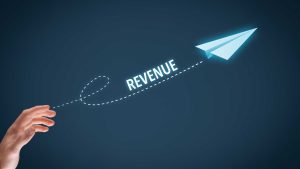Table of Contents
Your B2B SaaS is leaking revenue without your knowledge and you need to act before the leakage causes huge losses and hinders your business growth.
Read on to understand the revenue leakage that goes unnoticed, the main causes of revenue leakage, and how you can prevent it.
Revenue leakage can be dreadful for any B2B SaaS business. It can lead to huge losses in your B2 SaaS firm.
Unfortunately, it occurs in the small cracks in your business operations.
Often, revenue leakage doesn’t happen due to external or major damages.
The good news?
Keep reading to learn how revenue leakage in B2B SaaS can be prevented.
What is Revenue Leakage?
 Revenue leakage in B2B SaaS is the constant loss of revenue within a company that occurs without the knowledge of the owner.
Revenue leakage in B2B SaaS is the constant loss of revenue within a company that occurs without the knowledge of the owner.
Often, revenue leakage happens due to inefficient, manually-done billing processes.
For most B2B SaaS firms that use monthly or annual subscription models, when a customer doesn’t renew their subscription, that’s an example of revenue leakage.
The key to avoiding this lies in incorporating the best practices for B2B subscription management along with a good recurring billing solution for your business. If you want to learn about the top tools available today, this curated list of tools by Attrock can be useful.
Such tools can help you manage each client’s subscription well to ensure they renew them when they’re about to expire.
What Are the Main Causes of Revenue Leakage in B2B SaaS?
Granted, loss of revenue in B2B SaaS companies can happen due to a myriad of reasons but these are the primary causes:
1. Handling Subscription Sign Ups and Billing Manually
 One of the primary causes of revenue leakage in B2B SaaS is manual billing.
One of the primary causes of revenue leakage in B2B SaaS is manual billing.
Yes, if your business handles subscription sign-ups and billing manually, you have a high chance of losing revenue without your knowledge.
Here is why?
• You’re probably calculating proration for each new subscription account manually—which is almost impossible.
• You start billing new accounts at the start of the next mid-billing period.
If you’re probably using the manual methods mentioned above for your subscription business, you’re not only spending more resources and time but you’re also increasing the chances of making errors—which could lead to revenue leakage in the long run.
Also, if you skip prorating, you’re losing revenue for every new account from the moment a customer signs up for your product.
In other words, you are giving out the product you spent a lot of time and resources to create to the customer for free.
You can prevent this by leveraging recurring billing software that automatically and accurately calculates proration for any new account—which means that new customers are billed from the moment the customer joins your subscription plan.
Additionally, recurring billing software updates your billing in real time when a customer upgrades to a higher plan.
And remember, to curb revenue leakage to a great extent, it is imperative that you integrate a good business accounting tool like Zoho Books into your system. Read through this review by SmallBusinessHQ to understand how this tool can streamline your business transactions.
But with so many software solutions out there, how do you pick the right one for your B2B SaaS?
Don’t worry. Attrock has curated a comprehensive list of tools to help choose the best recurring billing software for your business.
2. Billing and Invoicing Inaccuracies
 If you’re billing and invoicing your customers manually, you’re creating opportunities for revenue leakages due to inaccuracies in the entire process.
If you’re billing and invoicing your customers manually, you’re creating opportunities for revenue leakages due to inaccuracies in the entire process.
Inaccurate recurring billing and invoicing can hurt your business’ revenue and affect your customer loyalty relationships.
How?
- Because you’re more likely to bill the customer below the required amount—which makes your B2B SaaS lose revenue.
- You also risk overbilling the customer—which can make them cancel their subscriptions.
This is where using adaptive automated billing business software becomes helpful.
A SaaS recurring billing platform will auto-generate invoices by gathering real-time customer database for every account.
Due to the efficiency, reliability, and accuracy of the recurring billing software, opportunities for human errors are minimized and revenue leaks are sealed.
3. Manually Updating Pricing
 The other primary reason why revenue leaks occur in B2B SaaS is performing price updates manually.
The other primary reason why revenue leaks occur in B2B SaaS is performing price updates manually.
Think about the amount of revenue that could leak assuming you updated pricing manually for 2 years only to realize that you have been undercharging some customer accounts.
When you constantly update pricing by hand, you increase the chances of human errors.
This is where automated recurring billing software such as Younium comes in handy. You can use these software to automate your billing process and avoid any human errors.
It will not only improve your customer lifetime value but also enhance your business’ bottom line.
Besides, subscription billing software simplifies bulk pricing updates for all accounts which ensures that all accounts’ prices are updated.
4. Missed and Failed Payments
 This is also another major cause of revenue leakage in B2B SaaS. When some of your customers’ cards expire, their subscriptions might stop without them noticing. As a result, they may churn out because of inaction.
This is also another major cause of revenue leakage in B2B SaaS. When some of your customers’ cards expire, their subscriptions might stop without them noticing. As a result, they may churn out because of inaction.
You need to leverage a robust dunning process that tries to charge the expired card on a schedule, encourages them to make timely payments and retrieves update payment details of expired cards.
Because this is a lot of work, SaaS billing can help to automate the dunning process, retries, customer warnings, and updating card payments.
Conclusion
Revenue leakage in B2B SaaS is dreadful for any business. When they go unnoticed, they can cause major losses to your business which can hinder growth.
Thus, you should focus on handling revenue leakage carefully by developing a robust revenue leakage program.


